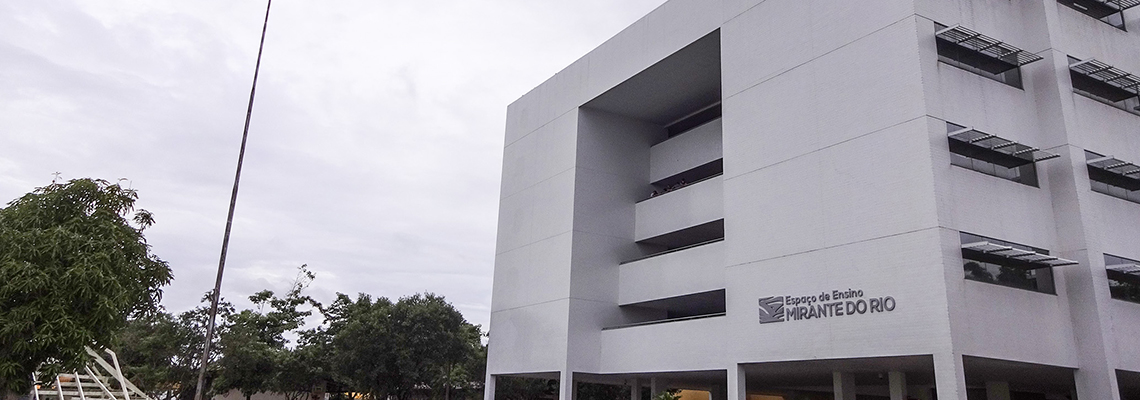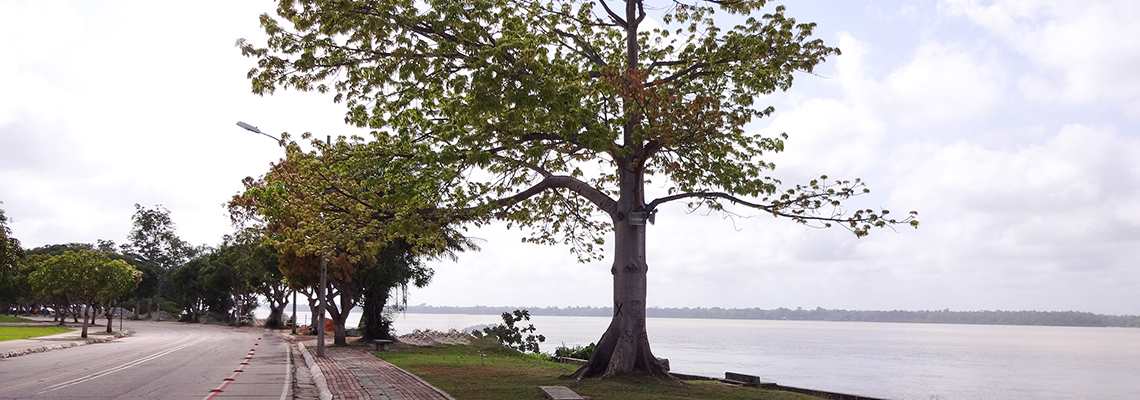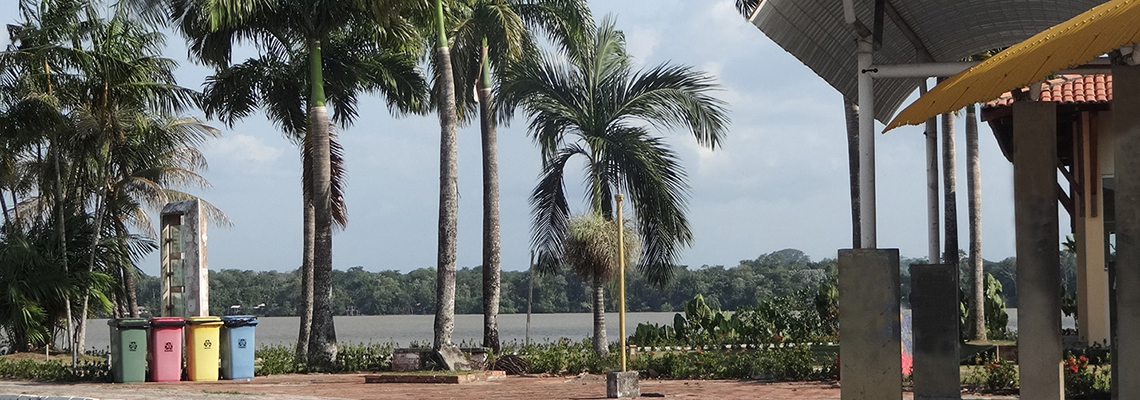The Risk Management and Natural Disasters in the Amazon Graduate Program presents an Area of Concentration: Risk Minimization and Mitigation of Natural Disasters in the Amazon, this area is based on all the Program's disciplines. The Program's Full Curriculum comprises, in its structure, 2 (two) fundamental groups of disciplines, namely:
1. Mandatory subjects
Conceptual, Theoretical and Legal Frameworks for Risk and Disaster Management (4 Credit Units, 60 Credit Hours)
Syllabus: Concepts of Environmental Fragility, Fragile Areas, Threat, Vulnerability, Risk and Natural Disasters. Prevention and its Development Phases. Resilience and Load Capacity. Social Processes and Risk, Vulnerability and Poverty. Cause and Effect in the Disaster Pressure Model. Methodology and Information Sources. The Vulnerabilities and Threats present and the Land Use and Occupation Process. Main socioenvironmental characteristics that threaten the environment or increase vulnerabilities. Vulnerability and Threat Case Studies.
Research Methodology (2 Credit Units, 30 Credit Hours)
Syllabus: General systematic of the research. Definition of the objective / problem. Theoretical context and elaboration of a work proposal. Techniques for collecting, systematizing, analyzing and presenting information. Discussion of themes and issues that they may come to work on as part of the process of evaluating activities carried out throughout the course.
Mandatory Internship (3 Credit Units, 45 Credit Hours)
Syllabus: Performance in operational routines developed at the National Center for Monitoring and Alerting of Natural Disasters - CEMADEN. These activities will be prepared by specialists and developed jointly with CEMADEN's operational teams. The master's student will apply the theoretical knowledge taught in the disciplines.
Understanding Vulnerability and Risk Mapping (3 Credit Units, 45 Credit Hours)
Syllabus: Definition of vulnerability, susceptibility and potential for risk. Perception of risk and resilience. Characterization of vulnerability according to physical, biotic and anthropic means. Determination of probability of environmental risks. Techniques for quantifying and qualifying environmental risk. Environmental risk cartography.
2. Elective Disciplines
Research Line: Natural Threats in the Amazon Environment
Elaboration of Environmental Risk Prevention Programs (3 Credit Units, 45 Credit Hours)
Syllabus: Precaution and Risk Prevention. Risk Management Systems. Planning techniques applied to risk management. Risk prevention, reduction and mitigation strategies. Monitoring of risks and intervention in disasters. Emergency Plans. Specific programs for risk areas in the Amazon. Decree of Emergency Situation or State of Public Disaster. Environmental audit. Environmental insurance.
Introduction to Natural Threats in the Amazon (3 Credit Units, 45 Credit Hours)
Syllabus: Natural Disasters: Definitions and classifications. Origin and Dynamics of Meteorological Causes Disasters: Storms, Cyclones, Hurricanes, Tornadoes, Waterfalls, Snowfalls, Hoarfrost, Heat Waves, Moisture Fall and Forest Fires. Origin and Dynamics of Hydrological Cause Disasters: Floods, Floods, Floods, Pororoca, Droughts, Droughts, Coastal Floods. Origin and Dynamics of Disasters of Geomorphological Cause: landslides, erosion, fallen lands. Origin and Dynamics of Disasters Causing Imbalances in Amazon Biocenosis: Animal and Plant Pests.
Risk Analysis and Management Methods (3 Credit Units, 45 Credit Hours)
Syllabus: Risk quantification techniques. Ecological / environmental risk analysis. Statistics applied to risk analysis. Risk qualification methods. Risk and Uncertainty. Classification as to the degree of associated risk. Integrated risk management system. Valuation of losses. Characterization of emergency situations. Planning, Organization, Direction, Control and Quality ideal for the manager of Emergencies and Disasters.
Techniques for mapping risk areas (3 Credit Units, 45 Credit Hours)
Syllabus: Cartography applied to the risk area. Geographic Information Systems applied to risk mapping. Field survey techniques for risk areas. Spatial data processing of risk areas. Methodological roadmap for analysis and preparation of risk maps and construction of scenarios. Zoning of risk areas. Modeling of support systems for the assessment and mapping of socio-environmental risks.
Variability and Hydroclimatic Changes (3 Credit Units, 45 Credit Hours)
Syllabus: Climate and Meteorology. Climatic variability. Evolution of climate change and future trends. Climate change and the effects on agricultural practices. Climate change and the effects on hydrological behavior. Climate change and the possibilities for triggering the Clean Development Mechanisms (CDM) of the Kyoto Protocol.
Research Line: Vulnerability of Populations in Risk Areas
Civil Defense, Public Goods and the Amazon (3 Credit Units, 45 Credit Hours)
Syllabus: Legal regime for the protection of flora: Brazilian forest code, the Legal Reserve and Permanent Protection Areas. Especially protected areas and the National System of Conservation Units and their consequences for the protection of vegetation cover in the Amazon. Legal regime applied to Civil Defense.
Environmental Education in Risk Prevention (3 Credit Units, 45 Credit Hours)
Syllabus: Environmental perception. Definition and concept of Environmental Education. Social issues applied to risk areas. Community and popular participation in disaster prevention and care. Social response to emergency and risk management plans. Social communication in risk areas. Development of participative risk management plans and emergency actions.
Social and Economic Vulnerability Studies (3 Credit Units, 45 Credit Hours)
Syllabus: Economic vulnerability, risk reduction, institutional structure. Resilience and risk reduction for disadvantaged populations to deal with natural disasters. Relationship between vulnerability and adaptive capacity of human systems. External obstacles to adaptation and connections between scales in terms of adaptive capacity.
Environment, Air Pollution and Public Health (3 Credit Units, 45 Credit Hours)
Syllabus: Global climate change: stratospheric ozone and ozone hole. Greenhouse gases and global warming. Chemical composition of the atmosphere. Pollution and air pollutants. Assessment of factors affecting air pollution. Air pollution effects: local, regional and global scale. Biogeochemical cycles: water, carbon, sulfur, nitrogen. Removal processes: wet and dry deposition. Atmospheric aerosols: physico-chemical properties. Acid rain: historical aspects and chemical composition of rainwater. Photochemical smog: tropospheric ozone and atmospheric oxidants.
Static Applied to Risk Analysis (3 Credit Units, 45 Credit Hours)
Syllabus: Measures of central tendency: arithmetic mean, harmonic mean, geometric mean, quadratic mean, median, fashion, midpoint. Dispersion or variability measures: dispersion measures, total amplitude, standard deviation, variance, separatrix, quartiles. Time series analysis: continuous and discrete series. Correlation. Simple linear regression.
Territorial Planning, Risk and Environment (3 Credit Units, 45 Credit Hours)
Syllabus: Legal instruments, territorial ordering and environmental planning. Material and life damage and potential damage to the environment and productive dynamics. Policies to regulate land use and occupation.








